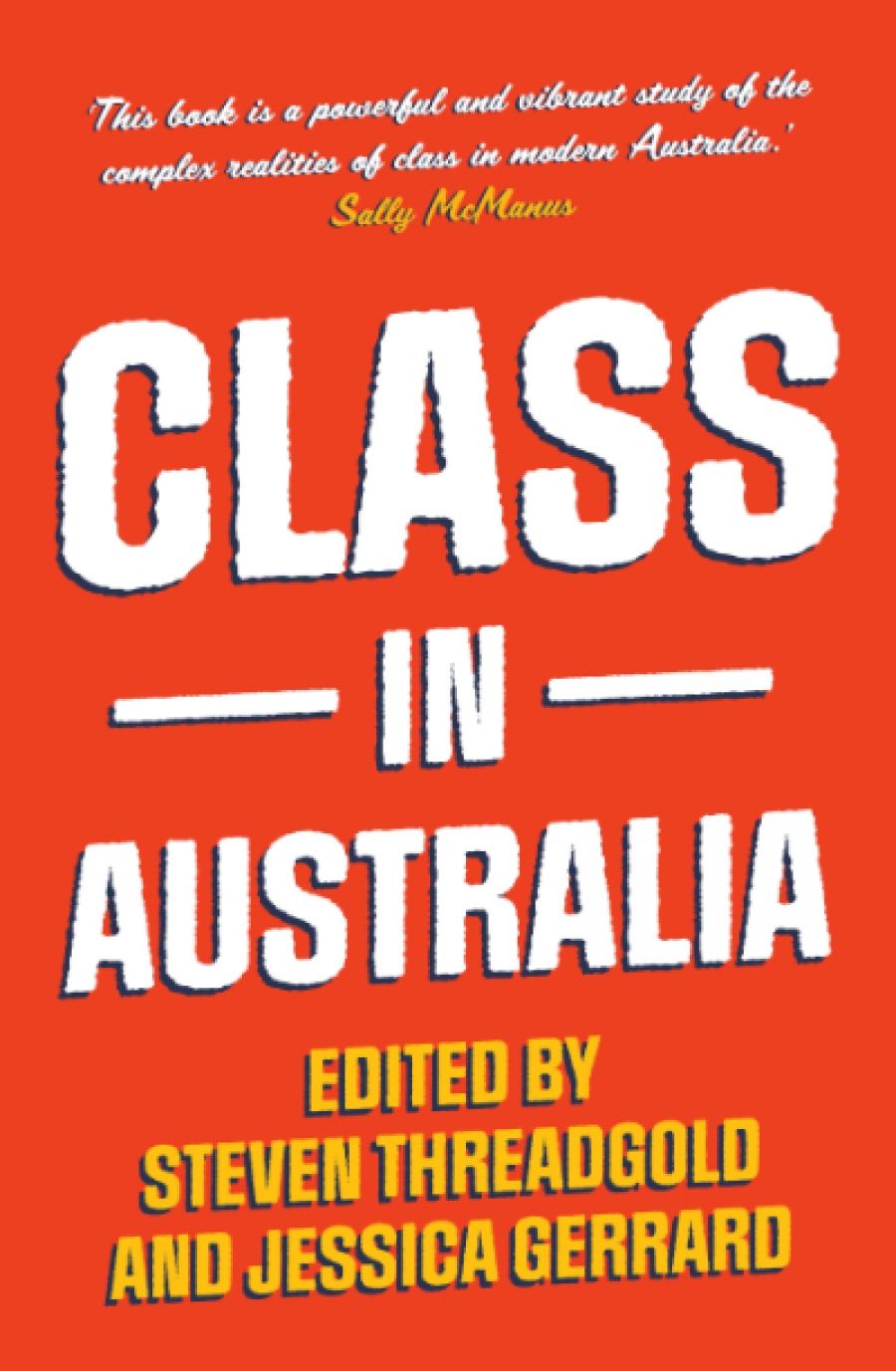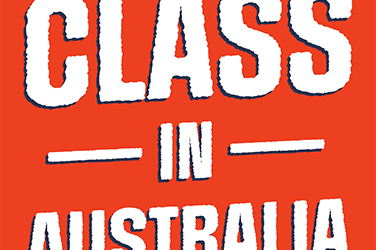
- Free Article: No
- Contents Category: Politics
- Review Article: Yes
- Article Title: ‘The point is to change it’
- Article Subtitle: An important but incomplete map of class
- Online Only: No
- Custom Highlight Text:
To contemplate class in Australia is to be confronted immediately by paradox. Australia has over the past forty years become much more unequal, and yet those institutions formed to contest class inequality – the trade unions and the Labor Party – have become weaker and less militant. The labour movement has largely avoided a language of class as divisive and old-fashioned, and yet right-wing propagandists have successfully deployed a rhetoric of ‘battlers’, ‘aspirationals’, and ‘élites’ to draw support and win elections. The university system has been transformed, so that its leadership is akin to a corporate class of ‘change agents’ and much of its workforce is insecurely employed. Within the halls of learning, class analysis has not for some time been an area of vigorous research; in the humanities and social sciences, the action (and the research funding) has long been elsewhere.
- Featured Image (400px * 250px):

- Alt Tag (Featured Image): Sean Scalmer reviews 'Class in Australia' edited by Steven Threadgold and Jessica Gerrard
- Book 1 Title: Class in Australia
- Book 1 Biblio: Monash University Publishing, $39.95 pb, 270 pp
- Book 1 Readings Link: booktopia.kh4ffx.net/9WZLWE
Steven Threadgold and Jessica Gerrard’s edited collection, Class in Australia, is therefore especially welcome. The editors affirm in the opening pages that class ‘still resonates as a form of political consciousness’. They further assert that the concept of class is necessary to understand how Australian society functions, how the powerful preserve their interests, and how inequality is moored in social and cultural institutions. They readily concede that other inequalities around race, gender, and sexuality cannot be ‘subsumed into class’. But they invite both public and academic debate on ‘what it means to name and map class in Australia’. And they propose that their collection is dedicated to promoting such debate, particularly on ‘the meaning, significance, constitution and role of class analysis in Australia today’.
In pursuit of these aims, Threadgold and Gerrard have recruited twenty-one fellow contributors, spanning internationally celebrated figures in the field – notably Raewyn Connell and Mark Western – distinguished senior and mid-career scholars, and several early-career researchers currently without stable employment. Their contributions are organised into five sections. Part One, ‘Situating Class Analysis in Australia’, provides theoretical (and, to a lesser extent, historical) explorations of class and class analysis. Part Two, ‘Class, Labour and Employment’, offers more fully realised examinations of particular groups: professional workers; the precariously employed; the unemployed. Part Three considers ‘Cultural Formations of Class’, in studies of language (‘Bogan Talk’); SBS Television’s Struggle Street; and the genre of the rural romance novel. In Part Four, two chapters examine the interplay of class and education. The book concludes with a pair of interviews: one, with Larissa Behrendt, Eualeyai/Kamilaroi academic and prominent public intellectual and campaigner; a second with Connell, arguably Australia’s most original and important social scientist of the past two generations.
Do the assembled writings meet the editors’ ambitious aims? Unquestionably, the collection demonstrates the richness and the variety of class analysis. It also helps to ‘name’ and to ‘map’ class in contemporary Australia. Contributors do not offer a simple polarity between impoverished workers and engorged capitalists, but rather sketch a much more variegated structure of opportunity, power, and mobility. Greg Noble underlines the complexity of the lived experience of class. Western examines the role of different kinds of income-generating assets in the development of class structure. Hannah Forsyth reimagines class through the history of the professions. Tom Barnes and Jasmine Ali trace the relationships between more or less precariously employed workers in a Melbourne warehouse. Chapters devoted to education explore the interplay of class (especially a changing middle class), race, gender, and a schooling system marked by inequality, selective competition, and parental anxiety. The cultural analyses of Part Two provide a sampling of the many ways in which class is presented (and sometimes denied) on television, in fiction, and in the newspapers, while also demonstrating the value of class analysis as a tool of cultural interpretation.
The emphasis on complexity manifests a praiseworthy desire to transcend a simplified two-class model and to consider the interaction of multiple structures of inequality. It reflects the findings of some of the closely observed life histories that populate and enrich this work. It also exhibits the formidable theoretical arsenal that contributors deploy, resting not just on classical Marxism but also on the works of scholars such as Pierre Bourdieu, Erik Olin Wright, and Barbara Ehrenreich, among others. The theoretical richness of many chapters will please those readers (like this one) with a strong interest in sociological conceptualisation. It may slightly undermine the editors’ aspiration to intervene in public debate and to reach a non-expert audience.
Collections of this kind are necessarily selective, and gaps are inevitable; editors should not be chided for absences in what is an admittedly incomplete volume. Nonetheless, the dominance of contributors from the disciplines of sociology and education is striking. No contributor attempts to track the changing distribution of income and wealth over time in the manner developed so influentially by French economist Thomas Piketty (and ably practised in Australia by Labor MP and economist Andrew Leigh). Only two of the chapters (by Forsyth and by Barnes and Ali) give close attention to employees. This is a map of class in Australia marked by many dotted lines.
The tradition of class analysis emerged out of active efforts to combat injustice, and not simply to map it. As Karl Marx famously stated in The German Ideology: ‘Philosophers have hitherto only interpreted the world in various ways; the point is to change it.’ It is perhaps a measure of the weakness of the labour movement and the difficulties of even imagining change that this collection largely leaves these matters to the side. Only Barnes and Ali examine the possibility of meaningful trade union action to win greater fairness. Some authors – such as Julie McLeod and Lyn Yates in their study of class and schooling – explicitly declare that their contributions to this book are not designed to produce ‘a simple action agenda’. The vast majority of the chapters pass over the possibility of change in silence. It is only in Part Five of the book – in interviews with Behrendt and Connell – that these matters are explicitly raised.
Class in Australia effectively demonstrates the utility of class analysis and the richness of contemporary scholarship from sociology and education concerned with class inequality. It is less successful in comprehensively mapping the nature of class in Australia and in advancing proposals for mobilisation or for policy change. Its strong explicit engagement with sociological theory grants it an intellectual sophistication, though it may limit its accessibility. But the editors are to be congratulated on their initiative in seeking to put the spotlight on class. It is up to others concerned with class inequality to extend the debate; Threadgold, Gerrard, and their contributors have provided a thoughtful and invigorating start.


Comments powered by CComment